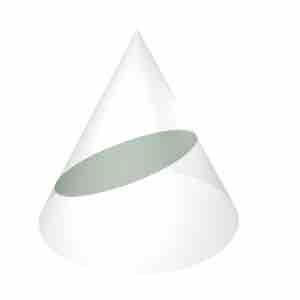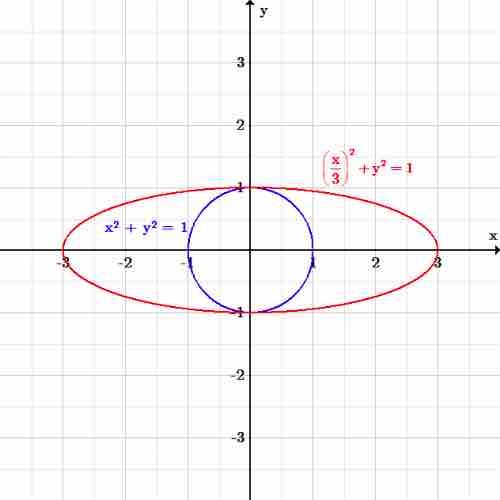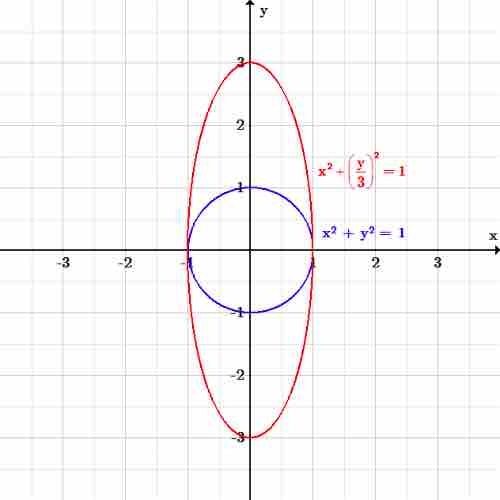An ellipse is one of the shapes called conic sections, which is formed by the intersection of a plane with a right circular cone. The general equation of an ellipse centered at
when the major axis of the ellipse is horizontal.

Ellipse
An ellipse is a conic section, formed by the intersection of a plane with a right circular cone.
In most definitions of the conic sections, the circle is defined as a special case of the ellipse, when the plane is parallel to the base of the cone. However, it is also possible to begin with the definition of a circle and use graphical transformations to arrive at the general formula for an ellipse.
Recall that a circle is defined as the set of all points equidistant from a common center. For simplicity, we will choose that center to be
In this equation,
To make this into an ellipse, we must distort the circular shape so that it is no longer symmetric between

Ellipse along $x$ -axis
The ellipse
Every
Similarly, we can scale all the values of
Now all the

Ellipse along $y$ -axis
The ellipse
If we stretch in both the
which is exactly the equation of a horizontal ellipse centered at the origin.
If we had used scaling factors that were less than one, it would have compressed the shape instead of stretching it further out.